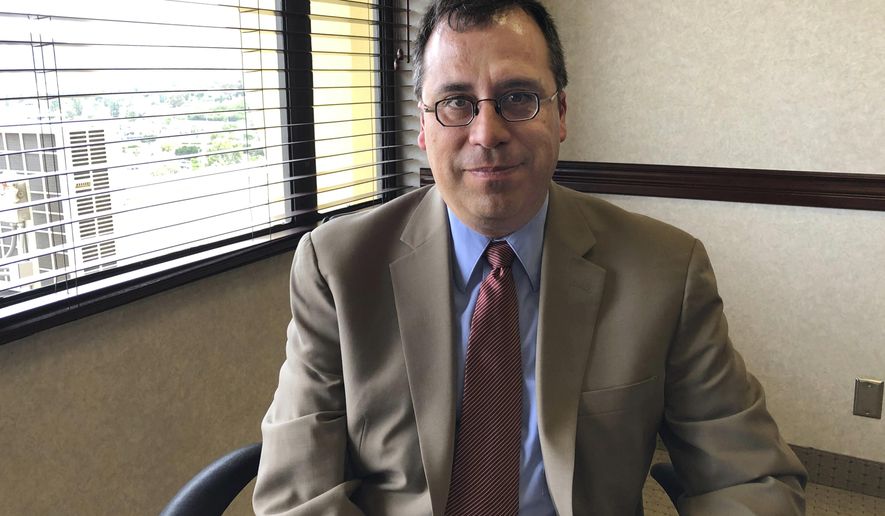LAGUNA NIGUEL, Calif. (AP) - Immigration officials will train dozens of U.S. border patrol agents to start screening immigrants arriving on the southwest border for asylum amid a surge in the number of families seeking the protection, a government official said Wednesday.
L. Francis Cissna, director of U.S. Citizenship and Immigration Services, said his agency will train about 60 border agents over the next few months to join in conducting the screenings on the U.S.-Mexico border.
The first group of 10 agents will start receiving training in Los Angeles next week.
“These agents are going to be receiving weeks of training. They’re going to be here at least a month,” Cissna said in an interview with The Associated Press on a visit to immigration offices in Laguna Niguel, California. “And so too will all the subsequent cadres of border patrol agents.”
The move comes as the Trump administration is grappling with a surge in the number of families with children arriving on the border. Border arrests are down compared with decades ago, but the number of children and families seeking asylum, many of them from Central America, has risen in recent years.
The number of immigrants apprehended on the border topped 100,000 for the second month in a row in April, the highest number recorded since 2007.
Asylum officers conduct initial interviews of immigrants arriving on the border to determine whether they have a credible fear of returning to their countries or should be sent back. Those who pass the interviews are allowed to seek asylum before an immigration judge, but their cases may take years to wind through the backlogged immigration courts.
Immigrant advocates have voiced concerns about border patrol agents conducting the screenings, which are mean to be interviews, not interrogations. Clara Long, senior researcher for Human Rights Watch, said agents often intimidate immigrants when initially asking if they fear returning to their countries.
“What we see over and over again is Border Patrol just has a culture of disbelieving asylum seekers,” she said. “It’s really hard to imagine these agents being able to create the openness and trust and listening that’s really required for a credible fear interview.”
A message was sent to U.S. Customs and Border Protection seeking comment. Cissna said he was confident agents could conduct the interviews and would be fully trained.
In addition to the border patrol agents, two dozen employees at the immigration services agency who have worked on asylum in the past are helping conduct the screenings, and a few dozen more have volunteered to do so, Cissna said.
“We have more people in the pipeline, another few dozen, at least, across the agency who have volunteered,” he said.
The move should help speed up the screening of immigrants in detention facilities who are waiting to see if they are eligible to seek asylum, and free up more detention beds, Cissna said.
In the months from October through January, officers completed credible-fear screenings in 10 days or less about half of the time, according to agency statistics.
There are currently about 200 officers assigned to conduct the screenings, the agency said.
The U.S. government also recently revised training documents for hundreds of asylum officers who carry out the screenings. Officers will now also need to explain why immigrants are found credible, while previously they only needed to spell out why immigrants were not, he said.
Megan Brewer, an immigration attorney in Los Angeles, said when she used to work as an asylum officer she often saw changes in training documents or guidance. While the laws surrounding asylum didn’t change, the revisions seemed intended to get officers to shift how they were handling cases, she said.




Please read our comment policy before commenting.